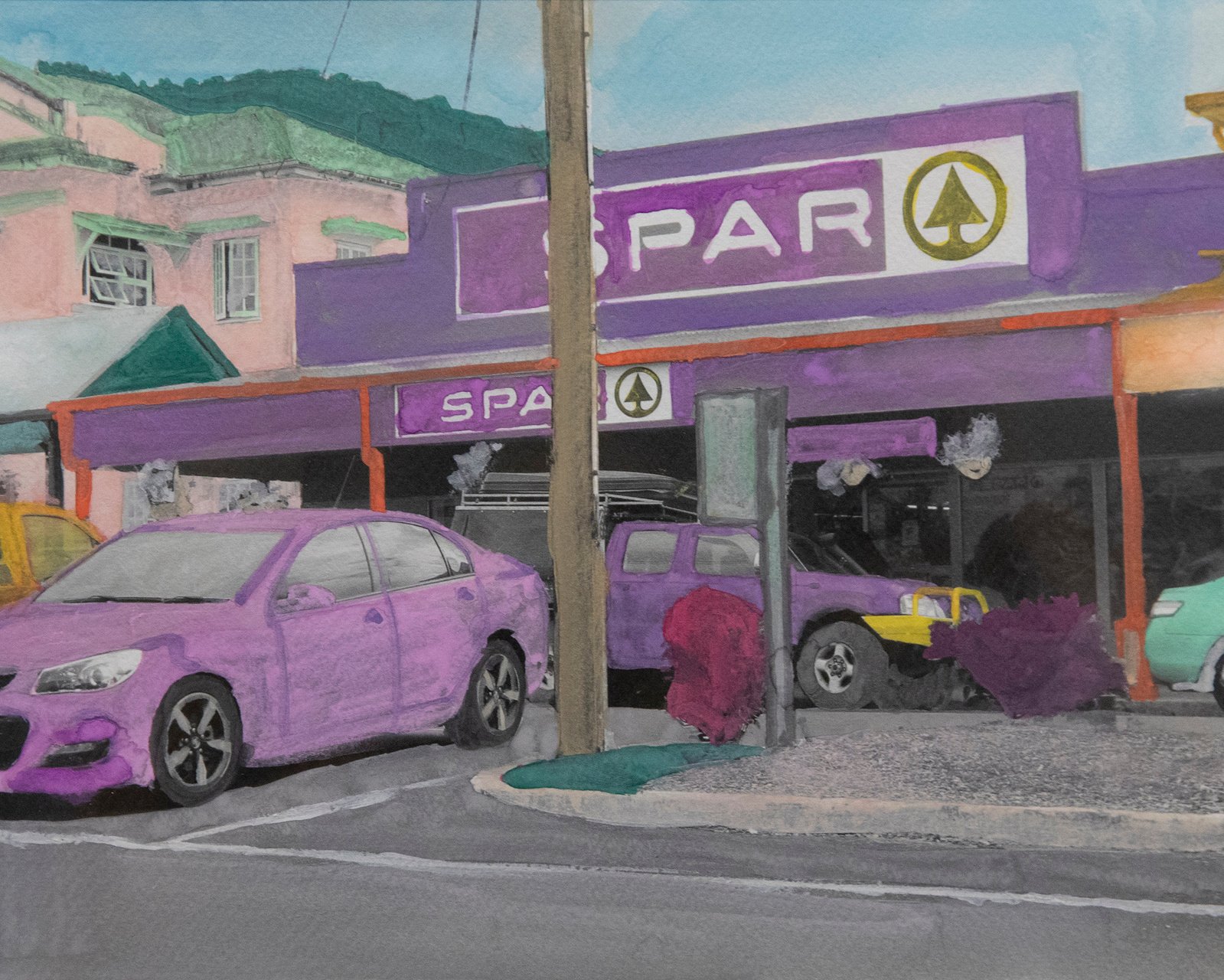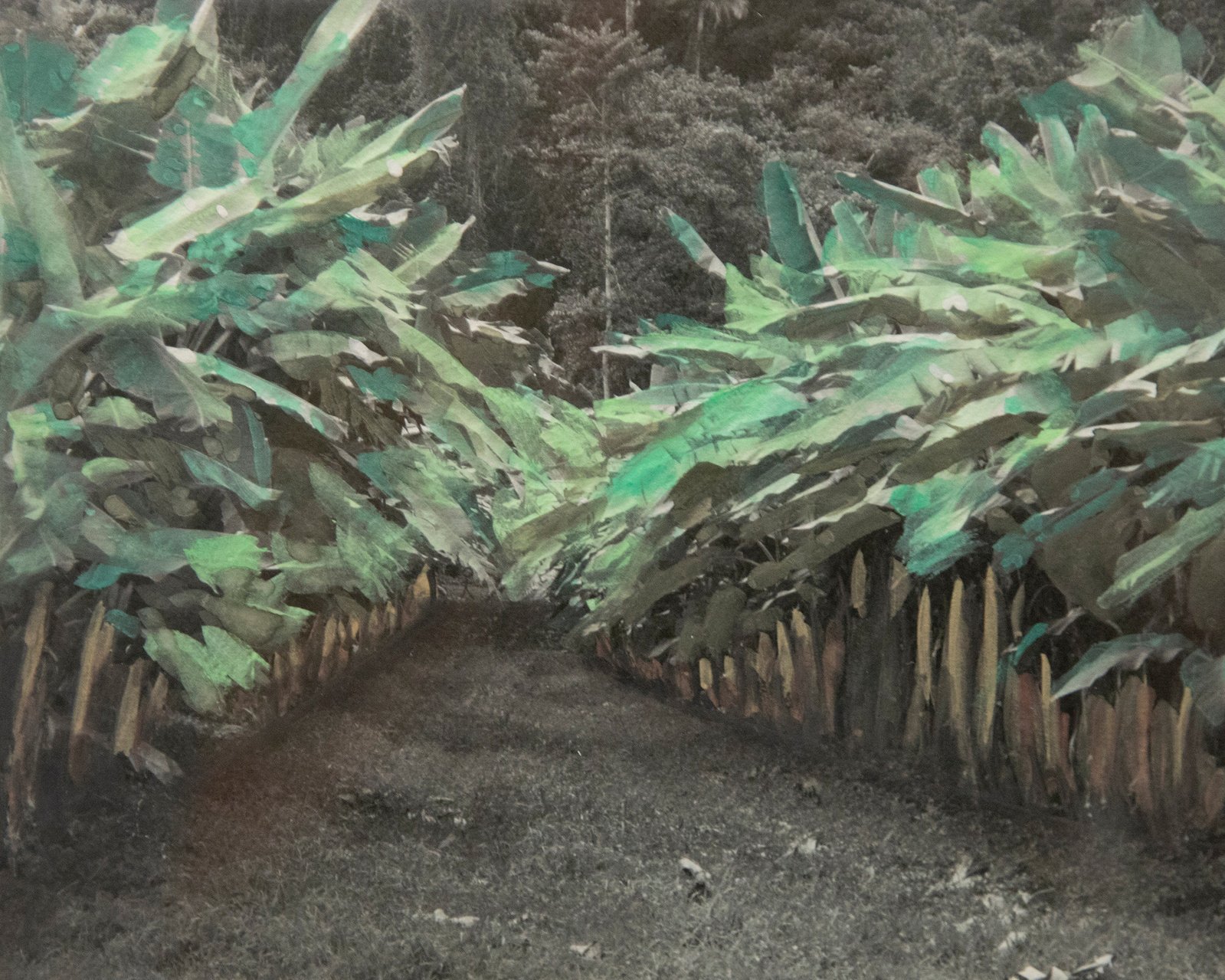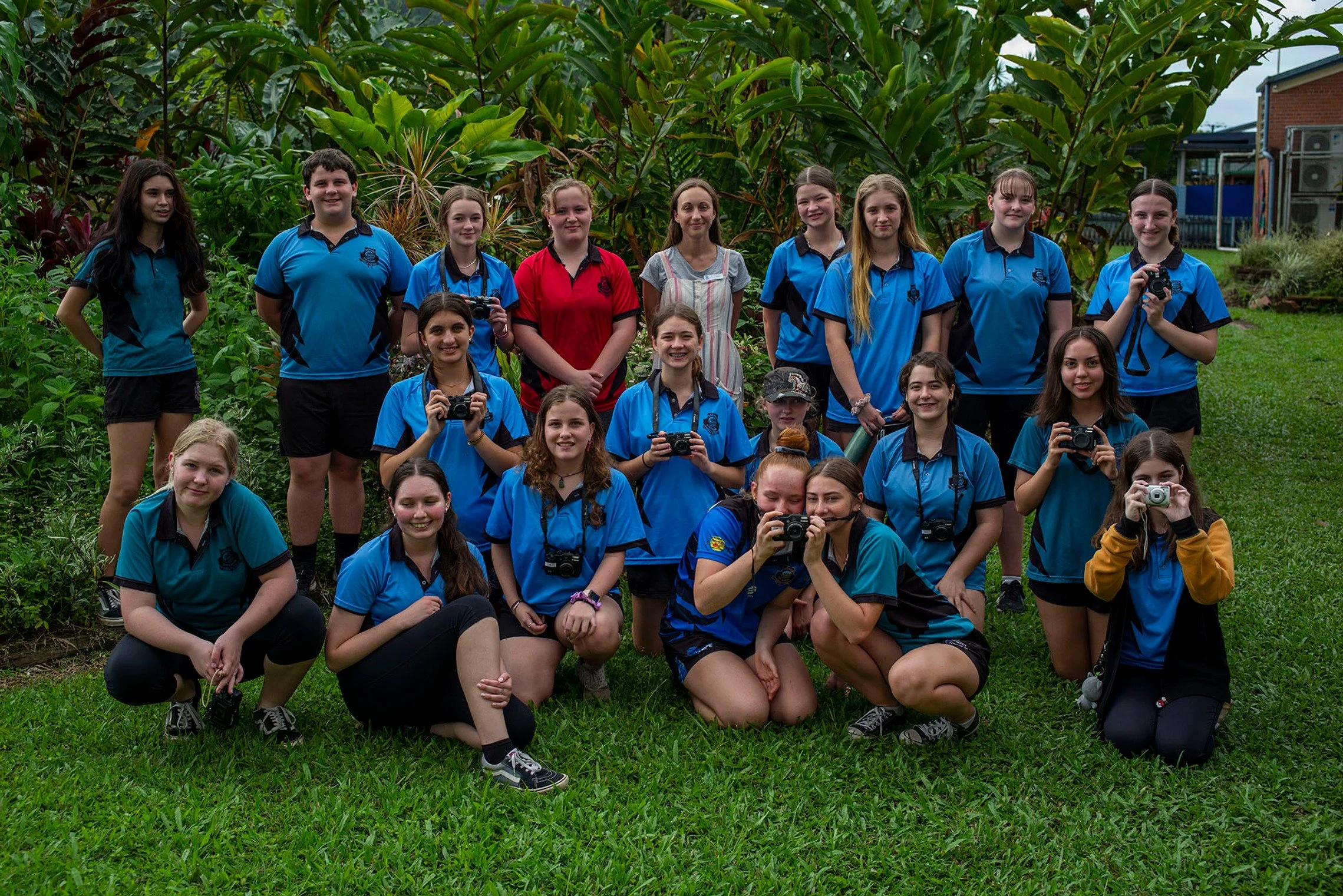Babinda State School Workshop
Babinda, Queensland (2021).
In 2021 PCPA collaborated on a six-week photography workshop with Year 9/10 students at Babinda State School in far north Queensland.
Project Aims:
Introduce students to digital photography
Introduce students to documentary photography using their own town as their subject
Understand the importance of editing and sequencing photographs
Promote individual creativity through watercolour application
Learn about, and participate in framing, exhibition curation and presentation
Project Outcomes:
Personal and artistic engagement with Babinda local environment
Development of digital photography skills
Introduction to documentary photography theory and history
Visual literacy skill building
Learning watercolour painting techniques and mixed-media applications
Image sequencing and editing
Photogrgraphic framing and presentation
Public exhibition in Babinda State School library for students, teachers, parents and community.
Artwork sales to local businesses.
Greater awareness for students in creative professions
See below for week-by-week outline of progress and outcomes from this workshop.










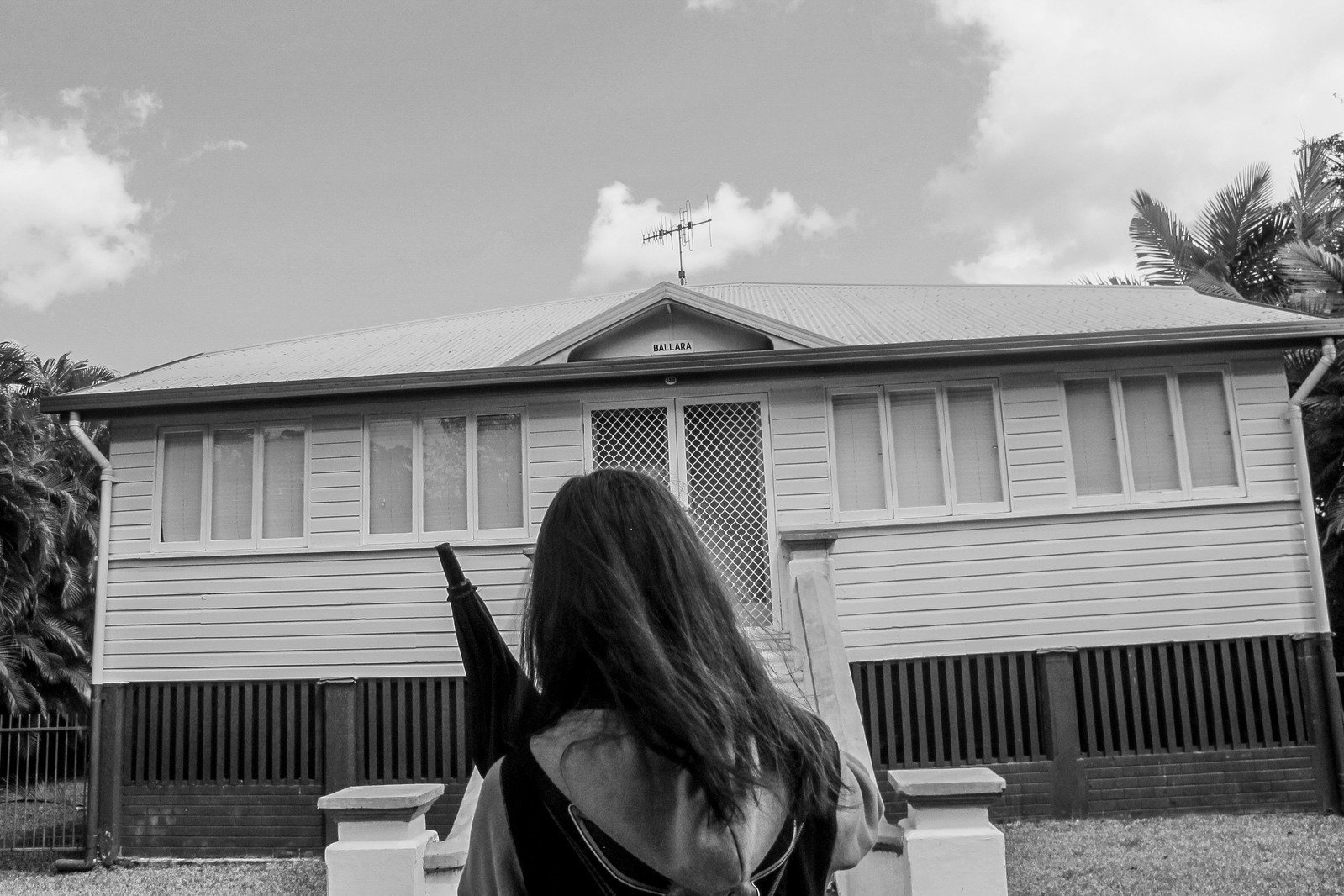



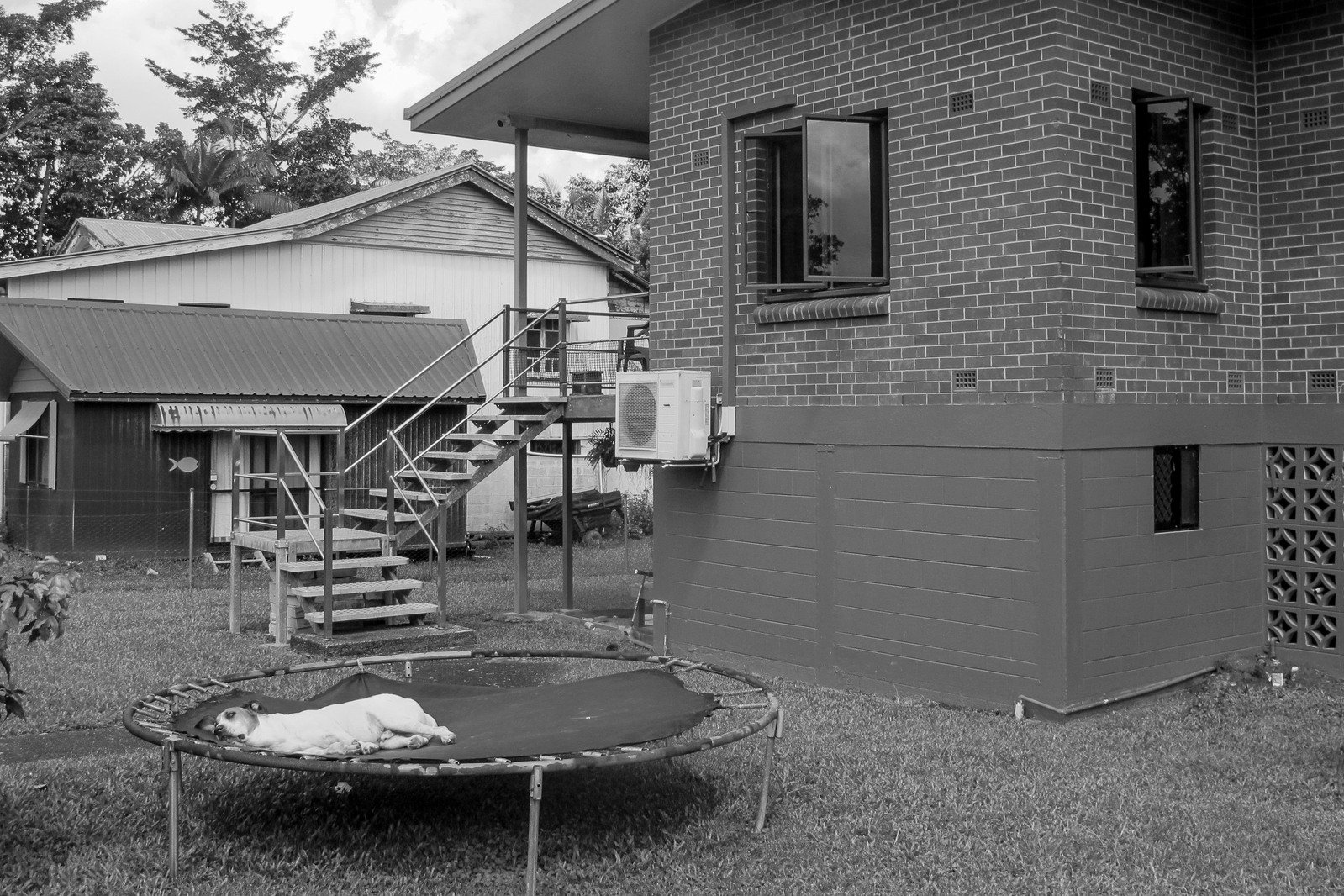




"This workshop has been a great self-esteem boost for the students and gives them a taste of how art can involve the wider community. I would highly recommend any school to be involved with PCPA and look forward to seeing more creative student work from around Queensland, as well as from around Australia and the Pacific!"
- Karina Talbott, Babinda State School Visual Arts Teacher.
-
PCPA is delighted to be working with students in Year 9 and 10 at Babinda State School on a five-week photography workshop. The workshop, designed with teacher Karina Talbott, aims to engage students with documentary photography and watercolour painting.
Students are learning the basic principles of documentary photography, using their own far north Queensland village of Babinda as their subject, and will use digital cameras to explore the town over two walking field trips.
Students' photographs will be selected and edited to create an exhibition of the town from the students' perspectives. To give the photographs a personal and unique touch, the images will be printed in black and white and then hand painted by the students.
In the first week, students were introduced to some well known and regarded Australian and international photographers. The students were also given a photograph (made in the nearby city of Cairns) to hand paint on which to develop a sense of confidence with watercolour application
-
PCPA was delighted to finally be able to meet the year 9/10 visual arts students at Babinda State High School over the past two weeks. Students were introduced to our Canon G12 cameras and after a short period of time in the classroom talking about photography, it was time to hit the streets of Babinda town with Ms Talbott and make some photographs.
The first Thursday was unseasonably humid for late August and we all felt the heaviness of the air as we walked into town and explored the main street. It's such a great sight to see over twenty high school students exploring Babinda with cameras in hand, working in small groups to collectively make a portrait of their own backyard.
At the end of the first field trip, students were asked to review their images in class and present to the class an image or two that they had made and that they were particularly happy with. Before we knew it, we had run out of time and the 3 o'clock school bell rang to announce the end of the school day.
One thing that stood out about the students we are working with was how respectful they were, to us, the cameras and to each other. While it was evident that the students had a great time walking into town and being out of school grounds, they also respected the project and their task of making pictures and starting to look at their town through the cameras' viewfinders.
From the 14 cameras that went out with the students in the first week, we made an initial selection of around 120 photographs that had the potential to be used in the final series of images. They were definitely off to a good start.
-
After a 24 hour period of torrential rain only a day before our third workshop at Babinda State School, we were lucky (and thankful) to have a sunny, blue sky for our second and final photography field trip into Babinda to make photographs with year 9 and 10 visual art students.
At the start of the lesson we spent about 30 minutes going over the selected images from the previous week and discussing the attributes of many of the images while also giving constructive advice on others and how they could be reconsidered on the next outing.
It was great to have the contrast in weather from the previous week when it was humid and overcast. The change in weather enabled the students to see similar buildings and landmarks in a new light, with bright sunshine accompanying most of our time in town.
We noticed that on this walking trip, students were more considered in their approach and the images that were presented to the class after we returned to the classroom showed the improvement in their results. Like anything, the more time you give to something , whether it be photography or anything else, the more improvements are likely to be seen.
Now we will print out small work prints of over 200 images that the students made of the two field trips and we start the task of selecting and sequencing the chosen images which will then be enlarged and printed on watercolour paper for the students to paint.
-
After two consecutive weeks of photographing in and around Babinda, this week's class meant it was time for students to take stock of their images and look at which photographs would be selected for watercolour painting.
This workshop is being delivered as we ourselves undertake our long term projects. And one of the most important stages is making work prints of digital images so they can be laid out in physical form, grouped into themes and looked at objectively.
As students worked in pairs or groups of three to make pictures with digital cameras, it was hard to keep a track of who individually made each picture. Students therefore were asked to group images into themes that became apparent and were identified by students in a group session.
Themes included: Homes, shops, town, interiors, agriculture, street scenes, people, as well as the more personal themes of intrigue and mystery Working in a group on this collaborative project, the students organised photos and made selections for images that they would like to paint and include in the final exhibition.
We needed to select 26 for the final exhibition from a total selection of over 200 images. That isn't far off 1 out of 10, meaning that 90% of the images would be discarded and not make the cut (but not thrown away!). This is where the selection and editing of pictures become important in shaping the look and feel of the final exhibiton.
-
Reduced class numbers this week due to Year 9 camp gave Year 10 students plenty of elbow room to get started on their watercolour paintings. At the end of this week's workshop we had about 20 finished painted images that are ready for framing.
When Term 4 starts in a few weeks, it will be the Year 9 students' turn to get out the paint brushes and have a go!
Students took differing approaches to the task of watercolour painting, with some showing more restraint and allowing the original black and white image to prevail, while others used the printed image as a base on which to draw over. Once they are all framed, we think the diversity in approaches will benefit the exhibition and promote the unique stylistic approaches from the students.
-
Our final week! This week the group focused on finalising their watercolor images and framing their artworks.
Students learned how to take apart readymade frames, handle the glass carefully and clean it safely before placing their photo in the frame and putting the frame back together.
It’s always amazing to see photographs and artworks being framed. The images come to life and it was great to see the students proud of what they had completed.
The students gave individual presentations about their photographs and also talked about what parts of the project they liked the most (and least!). It was a popular consensus that the two field trips around Babinda were extremely enjoyable, as well as the watercolour painting.
